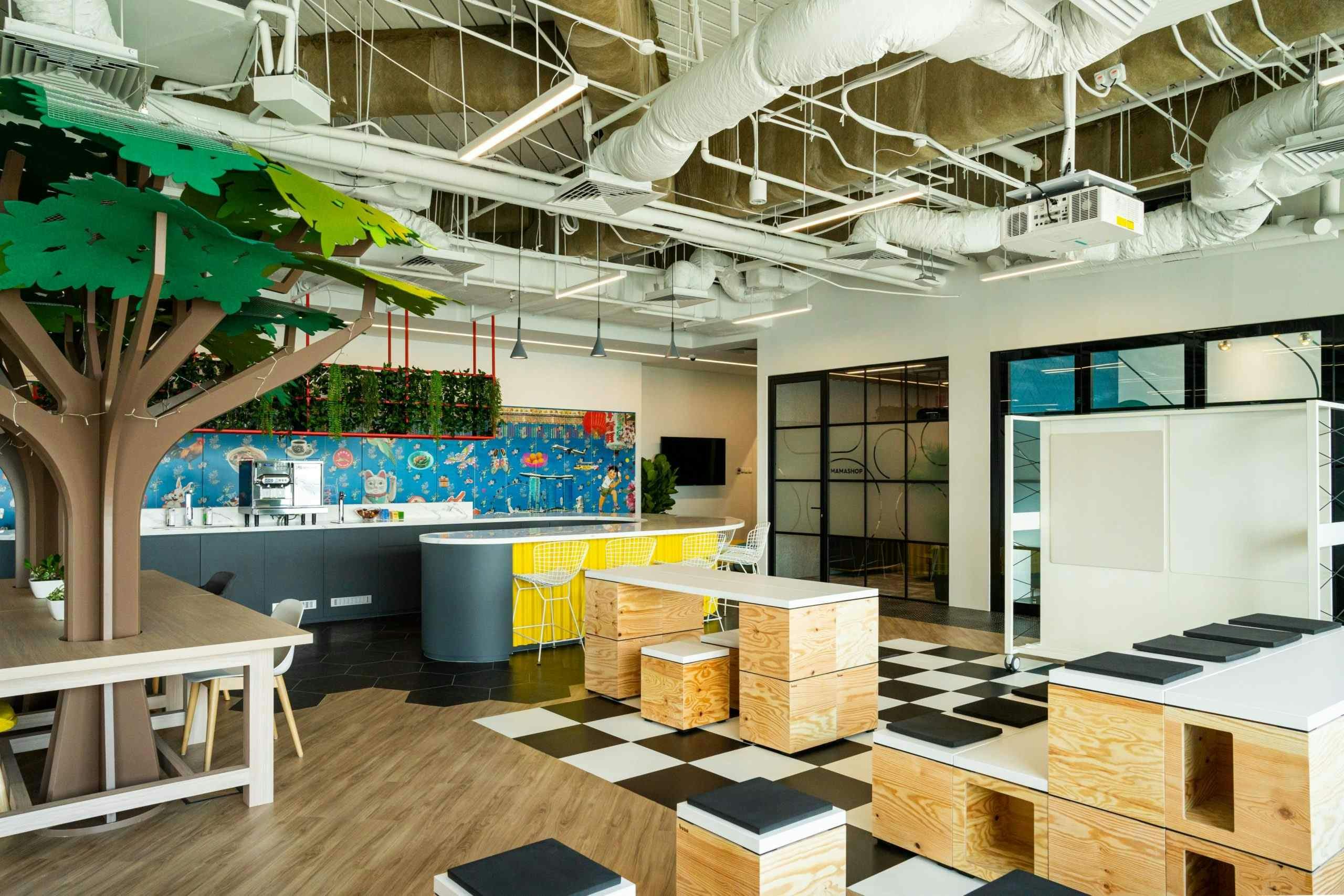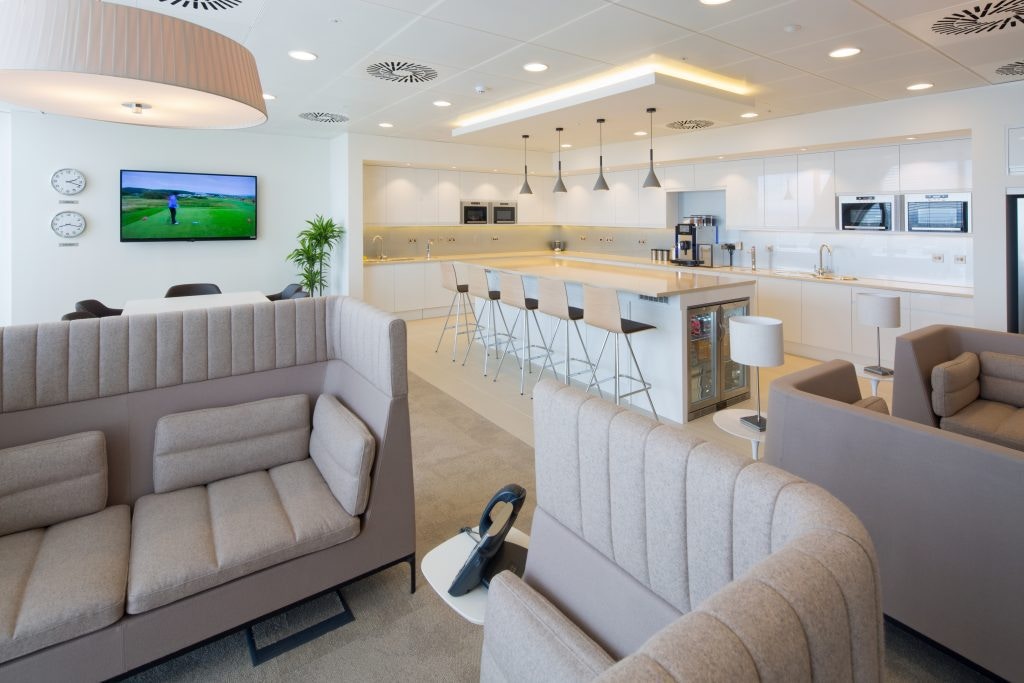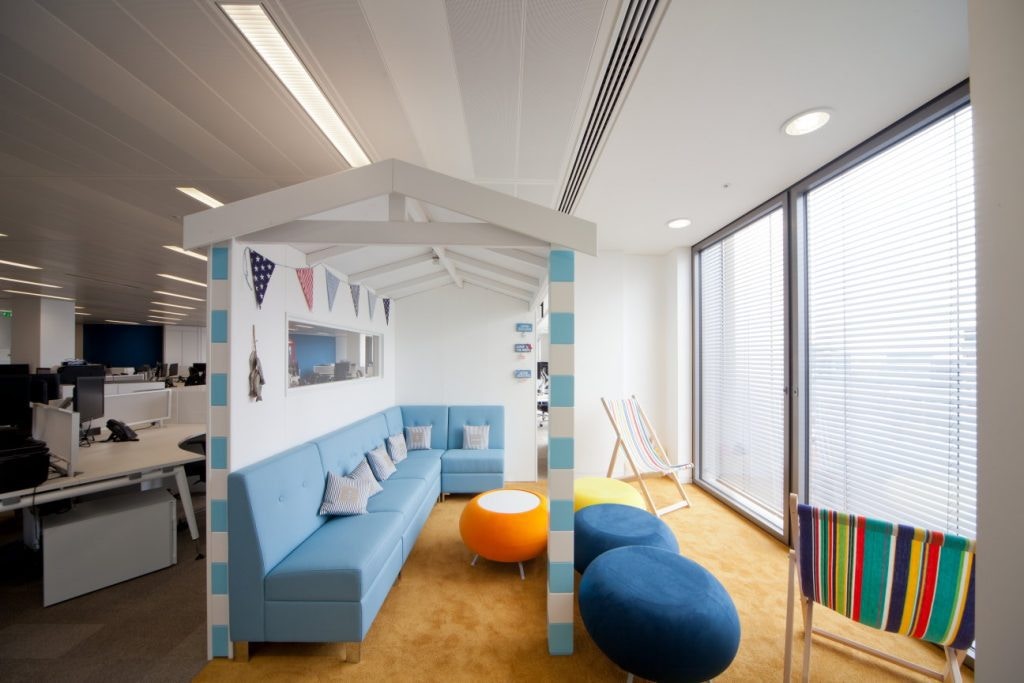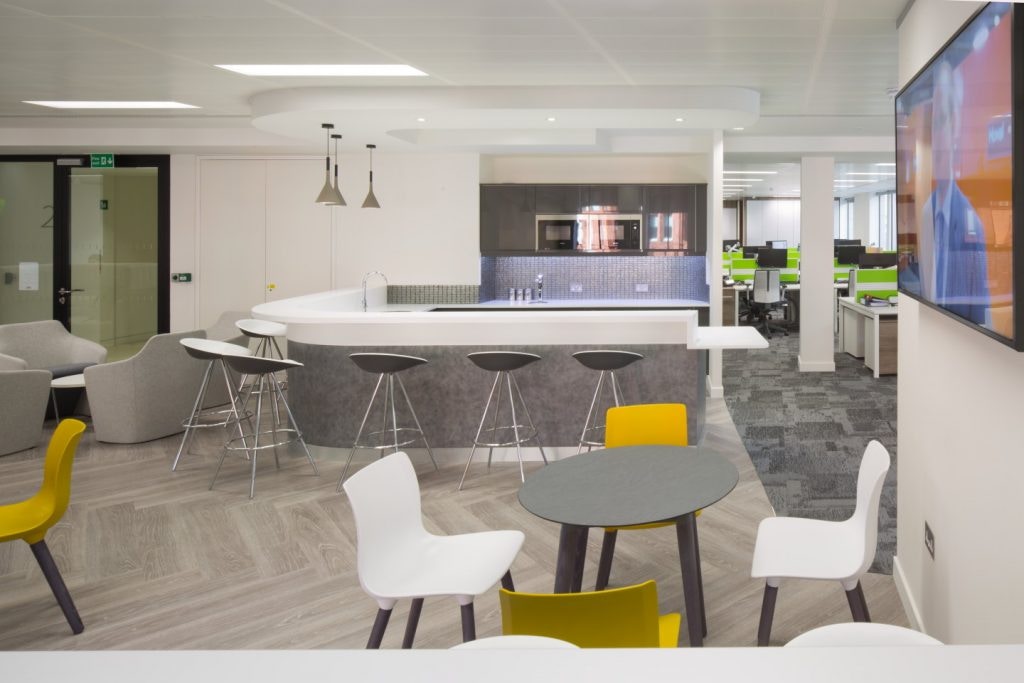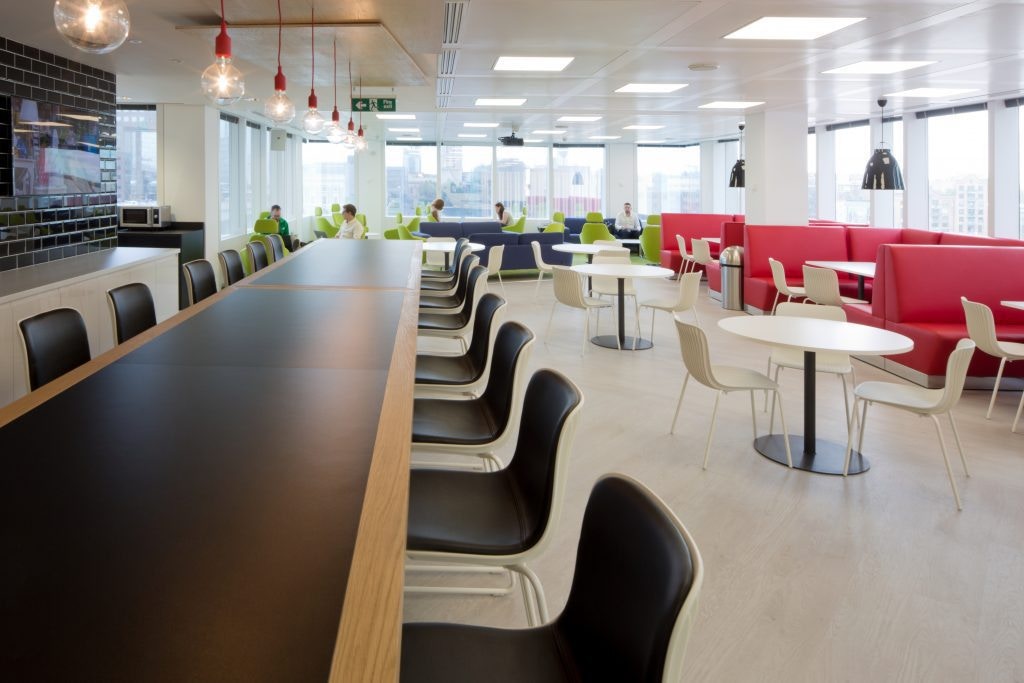K2 Space managing director Mark Phillips argues that social space is the most important part of today’s modern office in the latest issue of FM World magazine.
Breakout areas and office kitchens are good for helping employees engage and share ideas more readily, with people often feeling more relaxed and comfortable than in more formal meeting rooms.
Investment bank and asset manager William Blair has recently introduced a business lounge at its London office in Broadgate Tower. Sensible furniture choices and more domestic lighting and soft furnishings give their social space a more domestic feel.
